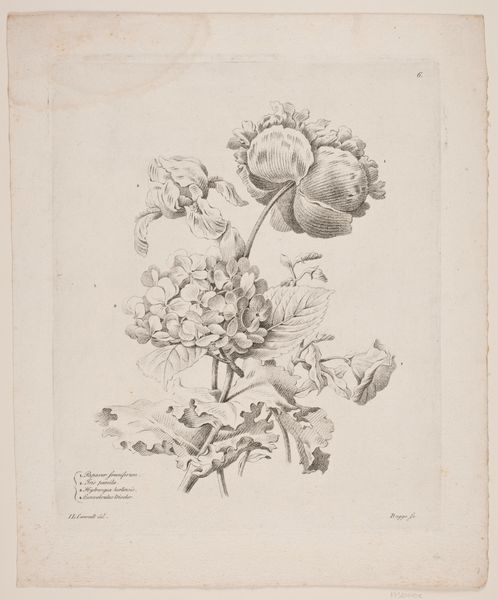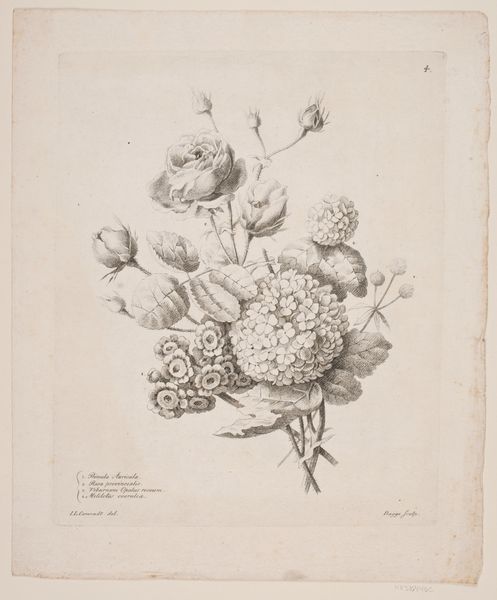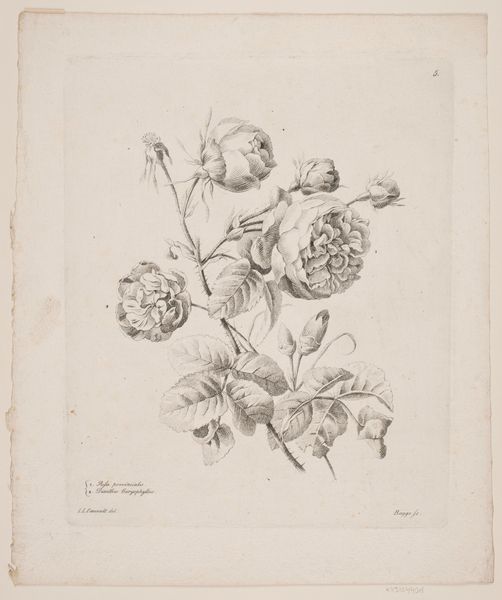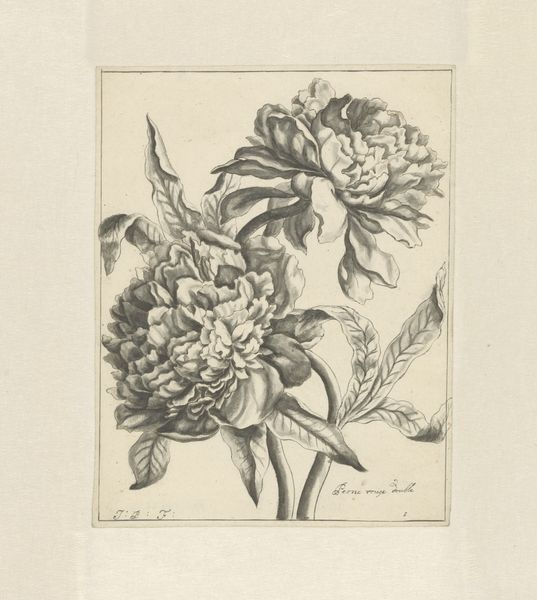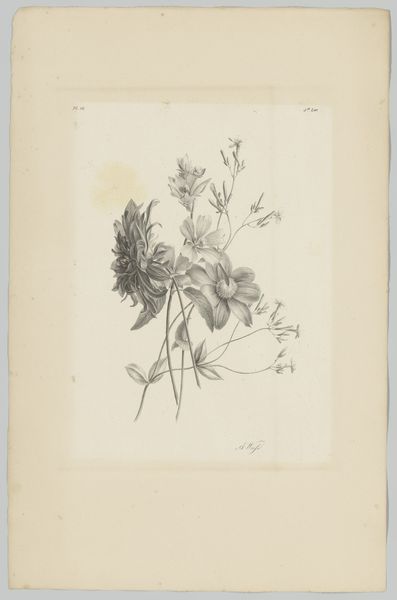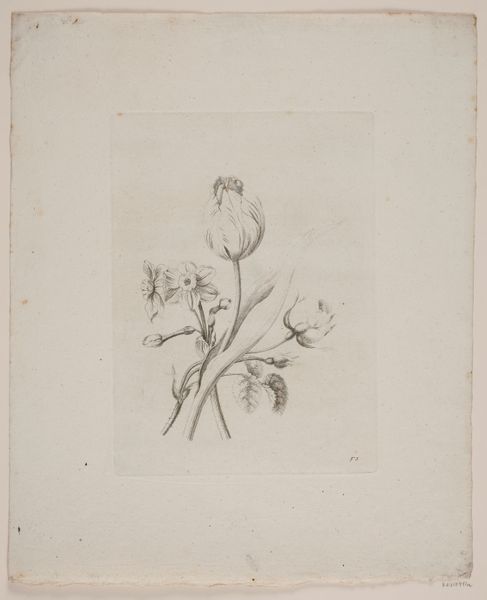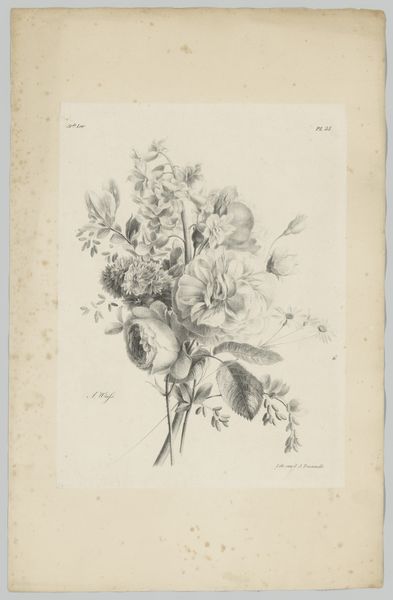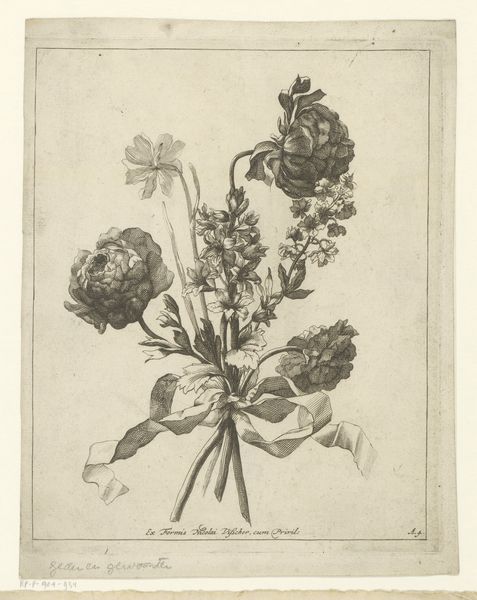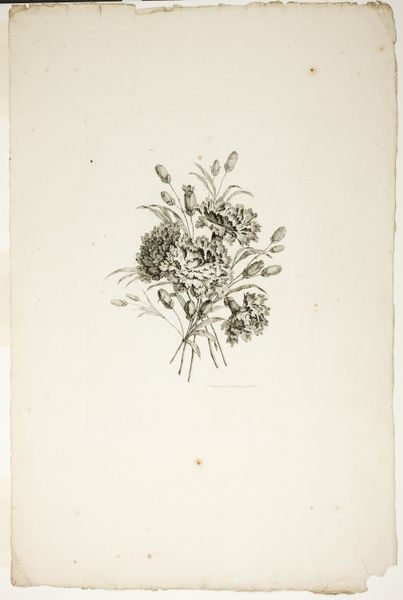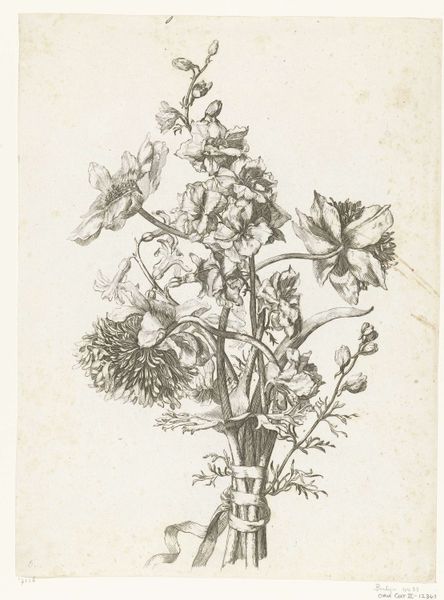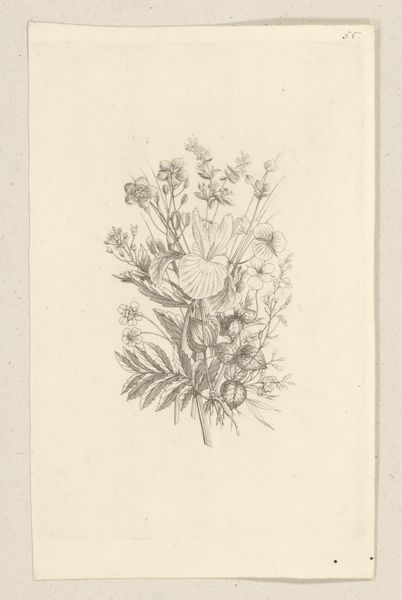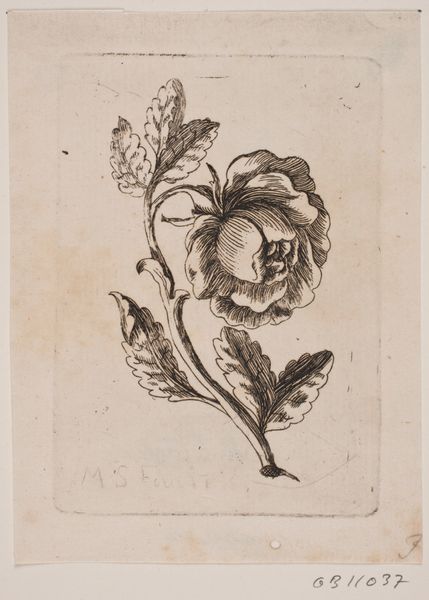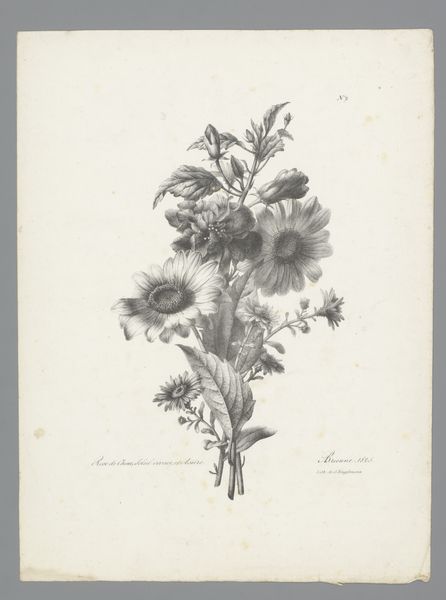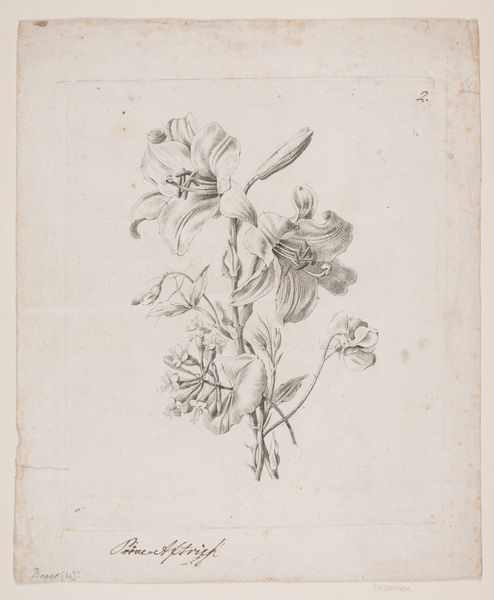
drawing, print, etching
#
drawing
# print
#
etching
#
etching
#
watercolor
Dimensions: 289 mm (height) x 236 mm (width) (plademaal)
Curator: Welcome. Before us is "Blomster," an etching created by Oluf Olufsen Bagge in 1816. The piece resides here at the SMK, Statens Museum for Kunst. Editor: My immediate reaction is one of delicate melancholy. The subdued tones and meticulous detail evoke a sense of ephemeral beauty tinged with inevitable decay. Curator: You pinpoint something crucial. Botanical illustrations of this era were, on the surface, scientific endeavors—documenting flora for scholarly purposes. However, they often reflected wider societal attitudes. Editor: Exactly! And let's consider the political climate of 1816. Post-Napoleonic Europe was in a state of flux. This focus on capturing transient, natural beauty could be seen as a quiet rebellion against the prevailing instability and enforced order. A longing for simpler, organic forms of existence. Curator: I hadn't considered it in such stark opposition, but I see your point. The scientific method itself was evolving; categorization, classification—almost an imposition of control on the natural world. Art like this drawing highlights both the wonder and, perhaps unintentionally, the vulnerability of that world. Editor: Precisely. These flowers, so carefully rendered, also represent a controlled version of nature that is disconnected from its life-sustaining ecosystems and contexts of their actual experience in nature. Is that not the project of the early nineteenth century generally speaking? To uproot phenomena of reality and extract data from it? The visual pleasure is real, but to me it points to so much more about control, observation and the colonial era desire to possess what is being visually examined. Curator: A vital reading, one that exposes how such detailed observations served multiple functions within the societal structure. Now, observing the material and methods, notice how the etching and use of watercolor allows for such intricate work, especially of each petal, and this further adds to the sentiment of attempting to grasp, if only through artistry, some permanent essence of nature itself. Editor: That final phrase resonates powerfully. A permanent essence—a pursuit as poignant then as it is today. What do you take away from "Blomster"? Curator: Its careful lines invite close observation while also prompting a broader questioning of humankind's relationship with nature. Editor: Indeed, reminding us that even the most beautiful imagery is intertwined with the sociopolitical realities of its time, for good and ill.
Comments
No comments
Be the first to comment and join the conversation on the ultimate creative platform.
